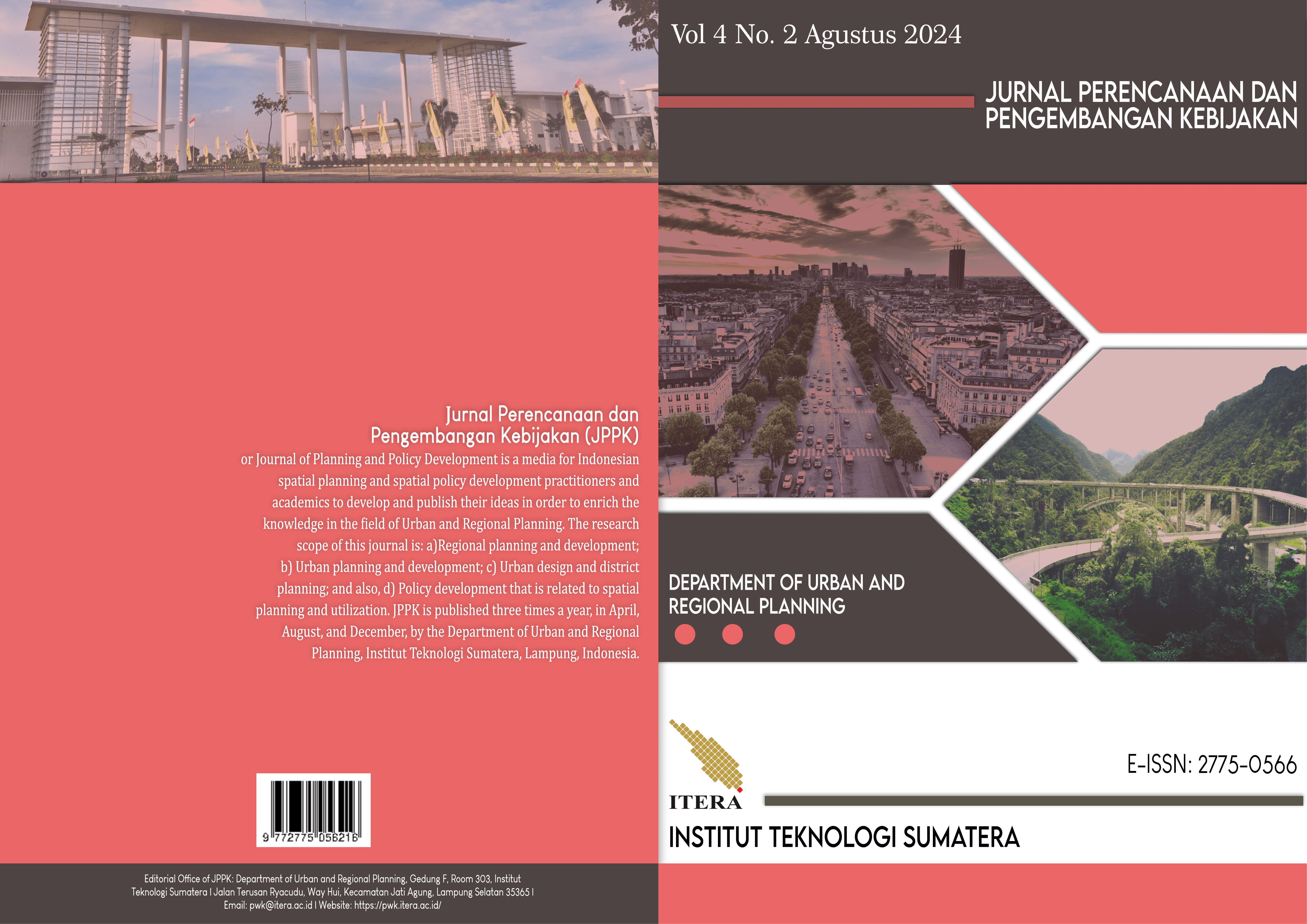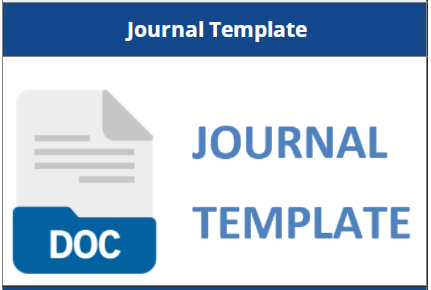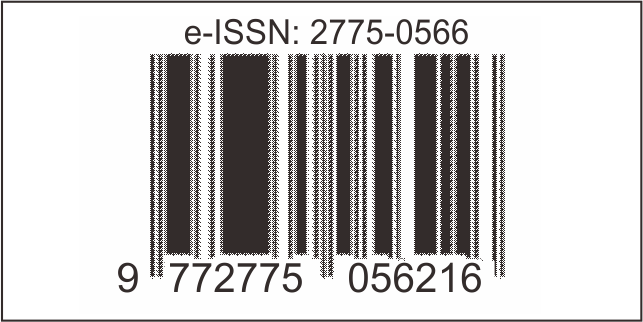PERUBAHAN GUNA LAHAN PORIS PLAWAD TANGERANG SEBAGAI KAWASAN TRANSIT-ORIENTED DEVELOPMENT (TOD)
Abstract
Urbanization in Jabodetabek is leading to an increase in the need for transportation. The 2018 Jabodetabek Transportation Master Plan (RITJ) aims to address this issue by planning transit-oriented development (TOD) areas throughout Jabodetabek, including the Poris Plawad transit-oriented development (TOD) area in Tangerang City. Once designated as a transit-oriented development (TOD) area, there should be changes in land use in Poris Plawad to suit the needs of the transit-oriented development (TOD) concept. Properly organizing land use around transportation nodes is essential for the success of transit-oriented development (TOD) projects. This study examines how land use has evolved over 11 years, before and after Poris Plawad was designated as a transit-oriented development (TOD) area. This research utilizes quantitative methods through descriptive analysis to compare Poris Plawad’s land use changes as a transit-oriented development (TOD) area. This research identifies the proportion of land use in the Poris Plawad transit-oriented development (TOD) area. The results indicate that the land use changes in Poris Plawad align with the transit-oriented development (TOD) concept. This indicates that before there was a policy regulating of Poris Plawad transit-oriented development (TOD) area, Poris Plawad's land use had the potential to become a transit-oriented development (TOD) area.
Downloads
References
[2] Bappenas. (2023). Public Private Partnership Infrastructure Projects Plan in Indonesia.
[3] Berawi, M. A., Saroji, G., Iskandar, F. A., Ibrahim, B. E., Miraj, P., & Sari, M. (2020). Optimizing Land Use Allocation of Transit-Oriented Development (TOD) to Generate Maximum Ridership. Sustainability, 12. https://doi.org/10.3390/su12093798
[4] Calthorpe, P. (1993). The Next American Metropolis. Princeton Architectural Press.
[5] Chi, B., & Lee, J. (2024). TOD effects on travel behavior: A synthesis of evidence from cross-sectional and longitudinal studies. Journal of Transport and Land Use, 17(1), 269–297. https://doi.org/10.5198/jtlu.2024.2417
[6] Chuang, I. T., Beattie, L., & Feng, L. (2023). Analysing the Relationship between Proximity to Transit Stations and Local Living Patterns: A Study of Human Mobility within a 15 Min Walking Distance through Mobile Location Data. Urban Science, 7. https://doi.org/10.3390/urbansci7040105
[7] Frederick, J., & Rahardjo, P. (2021). Rencana Penataan Kawasan Transit Oriented Development (TOD) Poris Plawad. Jurnal Sains, Teknologi, Urban, Perancangan, Arsitektur (Stupa), 3(1), 1233–1242. https://doi.org/10.24912/stupa.v3i1.11234
[8] Hasibuan, H. S., Koestoer, R. H., Permana, C. T., Elizandri, B. N., Danial, M. H., & Abdullah, J. (2024). Transport Policies, Transit-Oriented Development Redistribution of Population in Peri-Urban: Lessons from Kuala Lumpur and Jakarta Metropolitan Area. Malaysian Institute of Planners, 22(1), 256–269.
[9] Ibraeva, A., Correia, G. H. de A., Silva, C., & Antunes, A. P. (2022). Mobility impacts of a new metro system with transit-oriented development features. Transportation Research Part D: Transport and Environment, 109, 103357. https://doi.org/10.1016/j.trd.2022.103357
[10] Khaderi, S. S., Bakeri, N. N., & Shukor, A. S. A. (2021). The Transit-Oriented Development (TOD) Improvement Towards a Sustainable Development. International Journal of Sustainable Construction Engineering and Technology, 12(3), 333–341. https://doi.org/10.30880/ijscet.2021.12.03.032
[11] Perubahan Atas Peraturan Daerah Nomor 6 Tahun 2012 Tentang Rencana Tata Ruang Wilayah Kota Tangerang Tahun 2012-2032, Pub. L. No. 6, Peraturan Daerah Kota Tangerang (2019).
[12] Rahman, H. Z., & Tenripada, M. G. (2022). Analisis Prioritas Pengembangan Kawasan Poris Plawad Dengan Konsep Transit Oriented Development (TOD). Prosiding Seminar Rekayasa Teknologi (SemResTek).
[13] Rencana Induk Transportasi Jakarta, Bogor, Depok, Tangerang, Dan Bekasi Tahun 2018-2029, Pub. L. No. 55, Peraturan Presiden Republik Indonesia (2018).
[14] Shen, T., Cheng, L., Yang, Y., Deng, J., Jin, T., & Cao, M. (2023). Do Residents Living in Transit-Oriented Development Station Catchment Areas Travel More Sustainably? The Impacts of Life Events. Journal of Advanced Transportation, 2023. https://doi.org/10.1155/2023/9318505
[15] Stojanovski, T. (2020). Urban design and public transportation–public spaces, visual proximity and Transit-Oriented Development (TOD). Journal of Urban Design, 25(1), 134–154. https://doi.org/10.1080/13574809.2019.1592665
[16] T, E., B, P., & A, K. (2022). Assessment of Green Open Space in the Transit-Oriented Development Area in Jakarta. Civil Engineering and Architecture, 10(1), 1–11. https://doi.org/10.13189/cea.2022.100101












